The variable changed by the experimenter.
What is the independent variable?
How do engineers keep a fission nuclear reactor from melting down?
They use substances that absorb neutrons to slow down the chain reaction.
What is the name for the center of the atom?
The nucleus.
The three ways that an object can accelerate.
What are speeding up, slowing down, or turning?
The value for acceleration of objects dropped near earth.
What is 9.8 m/s/s (or 10) down?
The "big misconception" about projectiles that we explored using the monkey and the hunter and the equipment in the picture.
What is that objects spend more time in the air if they move sideways when they are dropped or launched in the air? (they don't)
The variable that is placed on the vertical axis of a scatterplot.
What is the dependent variable?
What daughter nucleus would be left over after Uranium-235 goes through alpha decay?
Thorium-231!
Fill in the blanks: The __________ force affects anything that has _______.
Electromagnetic force - charge
The position graph for a person who walks, then jogs, then runs away from position=0.

The definition of inertia.
What is the resistance to change in motion (acceleration)?
Everything we know about projectiles at the top of their flight (at least two pieces of information).
What are acceleration = -10m/s/s, vertical velocity = 0, and horizontal velocity is the same as initial horizontal velocity.
A graph for an experiment that tested how the size of car tires affects the gas mileage of a car.
What is an x-y axis with wheel size on the x-axis with a unit like meters and gas mileage on the y-axis with a unit like miles per gallon?
Polonium-214 has a relatively short half-life of 164 seconds. How many seconds would it take for 8.0 g of this isotope to decay to 0.1 g?
What is the most common isotope of the element carbon?
Carbon-12
The position graph for a person who starts not moving, and accelerates backwards.
What is this?
The complete force diagram for a football after it is thrown but before it hits the ground.
What is 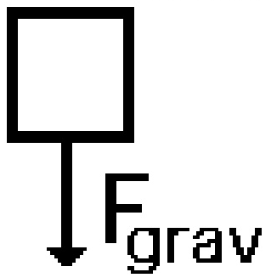
The number or numbers from this diagram that would help us calculate how long the projectile spends in the air. 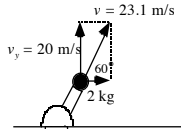
What is vy = 20 m/s up?
The mathematical tool (on a graph) for describing a rate of change.
What is slope (or steepness)?
5.2*1014 J
What is the charge of an atom of Carbon with 5 electrons in its orbitals?
6 protons - 5 electrons = +1 charge
The velocity graph for an object that is moving forward at first, but slows to a stop over a few seconds.
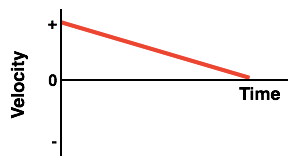
The speed of an object if it was launched straight up at 40 m/s 6 seconds ago.
What is -20 m/s? (gravity makes velocity change by -10 m/s every second)
The distance that would be travelled by an object launched off of the cliff shown below before it hit the ground.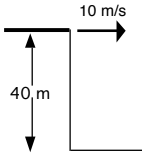
What is 28.3 meters? (initial vertical velocity is 0 m/s, vertical acceleration is -10 m/s/s, vertical displacement is -40, and horizontal velocity is 10 m/s)
A claim supported by evidence based on the information about the pendulum in this table. 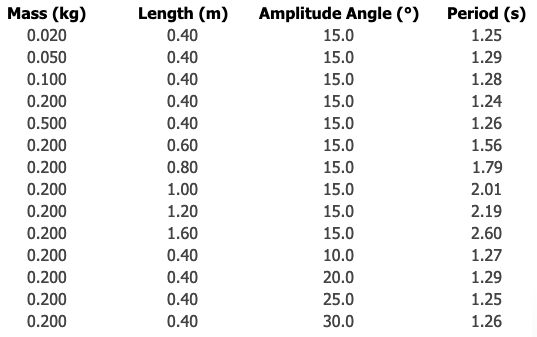
What is as ________ _________s, __________ _________s as shown in the data in rows _____?
Write a CER style response: Explain which type of decay (alpha, beta minus, or beta plus) is most likely to occur in one of the four regions shown below. 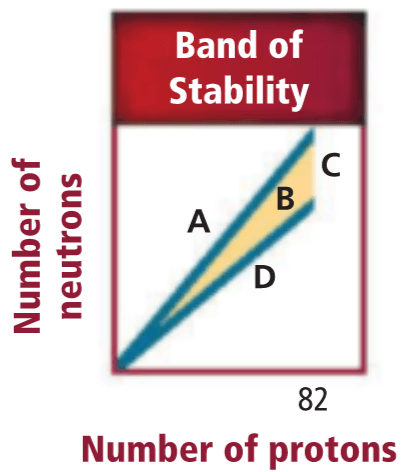
Make a claim
Back your claim up by reading the x and y axis of the graphs.
Explain why that type of decay would fix the imbalance of protons and neutrons.
How many neutrons does an atom of lead 207 have?
207 mass - 82 protons = 125 neutrons
A position graph for the motion map shown below:
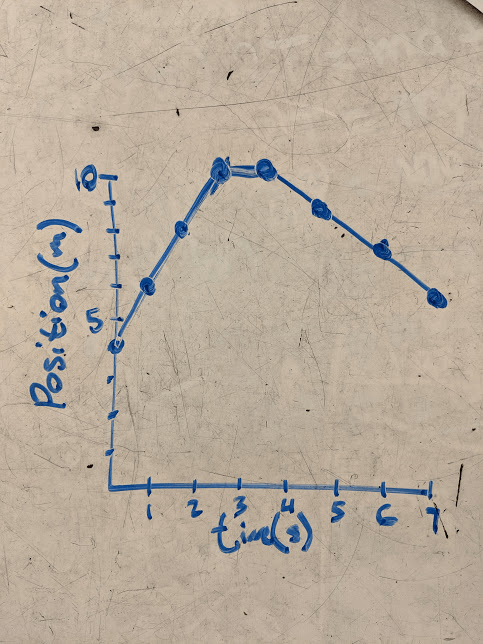
A claim supported by evidence based on the data in this table.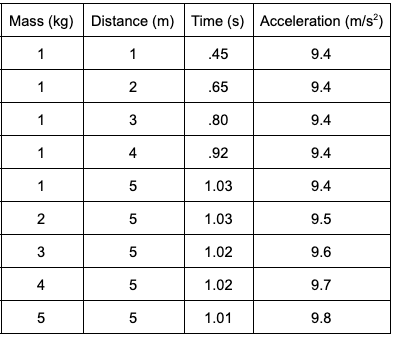
A CER conclusion that can be made based on the data in this experiment where initial velocity and launch angle of a projectile were changed.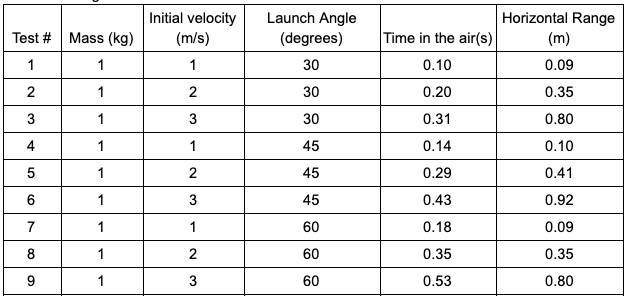
There are many answers to this
ex: Increasing the angle that the cannon is launched at from 30 degrees first increases, then decreases the range of the cannon. 45 degrees appears to give the maximum range. Tests 1, 4, and 7 all have the same mass and initial velocity, but yield different ranges with tests 1 and 7 having the same range, and 4 having more. This is because high angles give high vertical velocity, which makes the projectile have a long hang time. Low angles have high horizontal velocity, which means the object moves quickly sideways. 45 degrees has equal parts vertical and horizontal velocity.